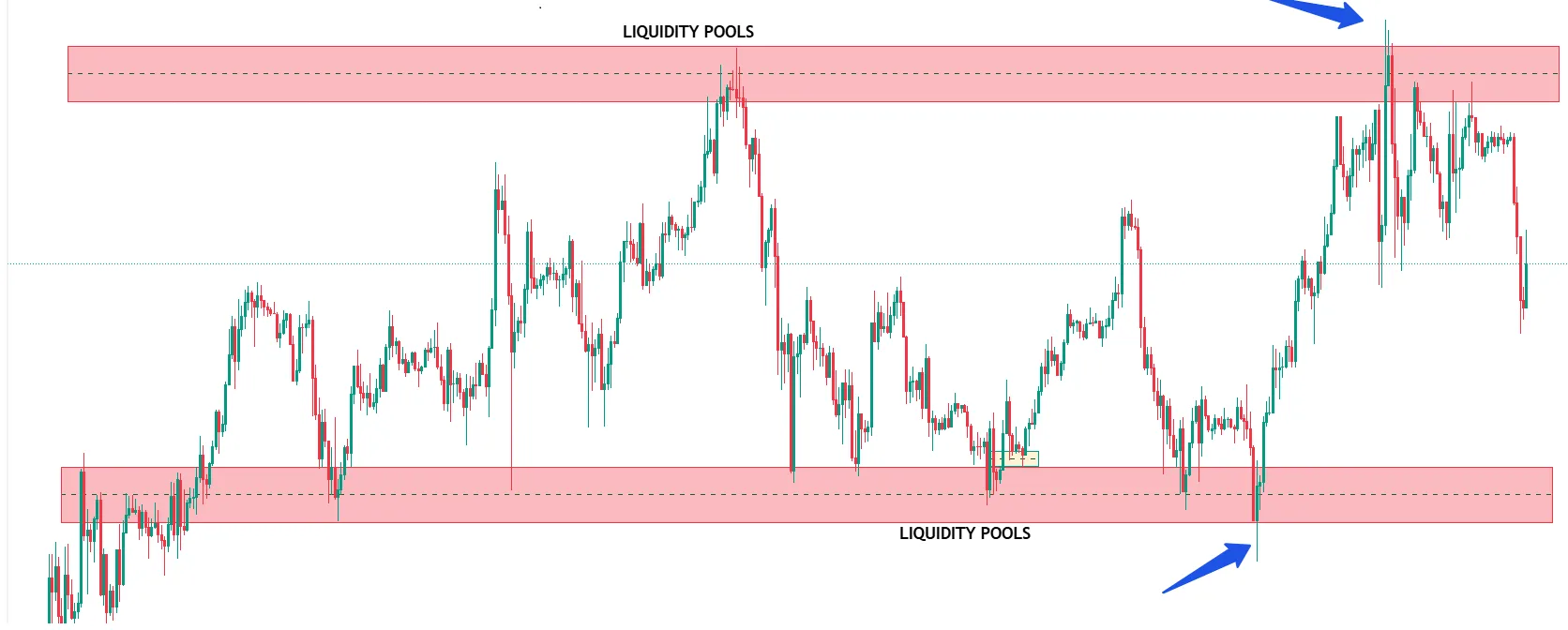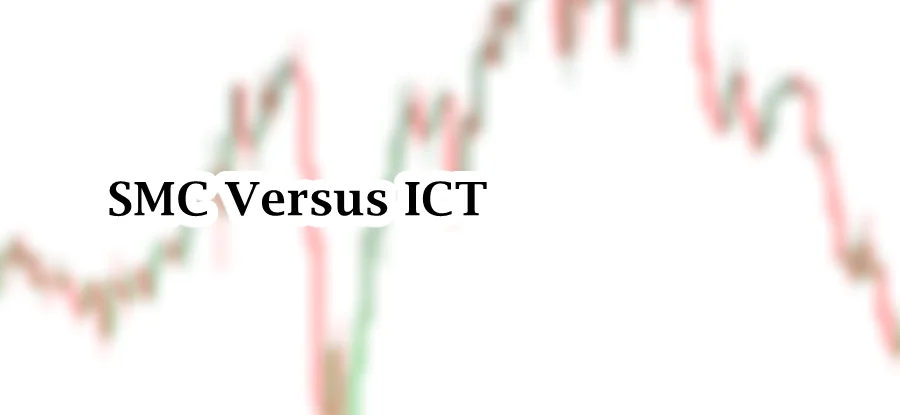
Table of Contents
In this modern age of technology, every huge data is note operated randomly. In order to run smoothly, almost every platform follows a structured set of rules to ensure smooth functionality. Well-known social media platform and search engines use advanced algorithms to deliver results.
Financial markets, at first, operated manually. Now, the prices displayed on live charts are not random. According to Michael J. Huddleston, price movement is not random. It follows a system called Interbank Price Delivery Algorithm (IPDA). This article explores understanding, function and core concept of IPDA.
Understanding Interbank Price Delivery Algorithm (IPDA)
In forex trading, IPDA is considered as a revolutionary concept. This is because very limited data and information is available to traders. IPDA provides in-depth insights of how financial market operate with precision and intent. This concept represents a structured and algorithmic approach that institutional entities like banks use to ensure efficient price delivery.
Interbank Price Delivery Algorithm (IPDA) works by targeting imbalances and sweeping liquidity. These are the two causes of price movement. Imbalances are visually seen on price chart as Fair Value Gaps (FVG). Imbalances refers to a significant disparity between supply and demand. This occurs in the market when one side dominate the market. This results in abrupt price movement by creating areas on the chart where there is no equilibrium.

Liquidity in IPDA represents the willingness of buyers and sellers in the market. Liquidity exists above and below swing high or low. In ICT trading, buy-side liquidity lies above old highs, while sell-side liquidity lies below old lows. IPDA ensure supply and demand equilibrium. This moves the price to the areas where orders are concentrated to fulfill institutional needs.
Function of IPDA
According to Smart Money traders, Interbank Price Delivery Algorithm is designed to ensure systematic price delivery in financial markets.
In forex market, there is a huge stake of liquidity providers. They execute massive trade volumes. This requires a structured mechanism to deliver prices efficiently without causing volatility. In Interbank Price delivery Algorithm ensure smooth price delivery by moving between liquidity pools. This provides institutions optimal risk management.
Liquidity is among the foundational concept in trading and investing. IPDA target liquidity zones. These are the areas where a huge number of stop-loss orders exist. These areas typically include buy-side and sell-side liquidity. IPDA seeks these liquidity pools and provide institutions with necessary volume for trade execution while ensuring price movement in structured manner.
Lastly, a key function of IPDA is market manipulation through liquidity sweep. The algorithm induces fake breakouts or stop hunts. Retail traders often misinterpret these price movement. The manipulation serves the purpose of fulfilling liquidity needs and removing weaker hands from the market. Understanding these manipulations allows traders to align with institutional strategies.
Core Concept of IPDA
IPDA in forex trading explain price movements as deliberate and systematic rather than random. One of the foundational aspect of ICT trading is that price movement is not random. There is a proper mechanism which makes the price movement systematic rather than random. IPDA serves objectives related to market efficiency and liquidity. This enables traders to understand and anticipate market behavior.
In ICT trading, to comprehend Interbank Price Delivery Algorithm, it is important to internalize the two major concepts in trading.
First one is imbalance. This refers to a significant disparity between buyers and sellers in the market. When one side of the market dominate the other, price moves to fill the inefficiencies. This imbalance appears as gaps between candles known as Fair Value Gaps, or SIBI and BISI. Algorithm identifies these zones and drives price back to them to maintain market balance.
Second is Liquidity. This represents the availability of buyer and sellers willing to execute trades at different price levels. Liquidity exists above and below key price levels. These areas attract stop loss and pending orders from retail and institutional traders. These are the prime areas for price delivery.
Price Movement under IPDA
Interbank Price Delivery Algorithm directs price movement based on two primary objectives: Balancing imbalance, hunting liquidity.
There is a notion in ICT trading that price moves to fill inefficiencies in the market. Traders can identify these inefficiencies by market SIBI and BISI zones. After that traders wait for price to retrace and react at these levels.
In IPDA, price moves to levels and areas where orders are concentrated to fulfill institutional needs. These are often the highs and lows of previous sessions, weeks, or months.
Importance of Bias in IPDA
It is an important task of an ICT trade to determine directional bias of an asset. ICT Daily Bias helps in this matter of market analysis. Daily bias tells us either price is going to take the liquidity or balance the imbalance.
If the market’s bias suggests a move to sweep liquidity, ICT trader should focus on previous swing highs and swing lows. These levels are considered as magnet for price movement because of liquidity availability. On the other hand, if bias support balancing an imbalance, traders must market the BISI and SIBI zones.
Final Note
The Interbank Price Delivery Algorithm (IPDA) provides a structured understanding of price movements in the forex market. Understanding of IPDA enables us to be aligned with institutional strategies. Having an understanding of liquidity, imbalances, and market manipulation can help us in enhancing their decision-making and improve trade execution.
Forex Trading carries significant risk. No trading concept or strategy can guarantee consistent success in trading. However, all strategies are built to stay disciplined and improve risk to reward ratio. Seek professional advice before trading or investing. Never trade with the capital that you cannot afford to lose.
FAQs
What is the Interbank Price Delivery Algorithm (IPDA)?
IPDA is a structured set of rules that govern how prices are delivered in the forex market. It ensures systematic price movements, targeting liquidity and balancing market inefficiencies. Along with that IPDA facilitate institutional trade execution.
Is price movement in forex random?
According to Michael J. Huddleston, price movements are not random in nature. IPDA operates with predefined objectives. IPDA targets liquidity pools and fill the unfilled imbalances. This helps maintain market efficiency and fulfill institutional order flow.
Does IPDA guarantee profitable trades?
No, while IPDA provides insight into price movements, trading remains risky. Proper risk management and strategy refinement are essential for success.
I’m Abdullah Shah, a content writer with three years of experience in crafting engaging and informative content. My background in market analysis complements my work, allowing me to create content that resonates with audiences. I’m also a seasoned practitioner in the forex and crypto markets, with a strong foundation and deep interest in finance. My passion for the financial world drives me to produce content that is both insightful and valuable for those interested in understanding market trends and financial strategies.





